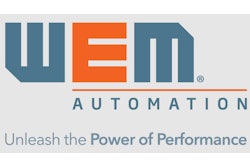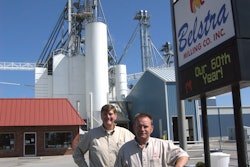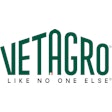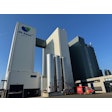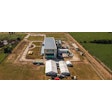Change is all around us and presents many challenges.
However, if you anticipate and manage for the inevitability that is change, it makes it much easier to achieve short-term success and long-term survival.
Being nimble in managing both your risk and your growth hasn’t always been considered a long-suited skill for cooperatives. Oftentimes, limitations due to cumbersome management structures or rigid bylaws have traditionally made cooperatives less likely to pursue an aggressive stance when it comes to growth.
Such is not the case with Gold-Eagle Co-op, in Eagle Grove, IA.
“Much of the credit goes to our board of directors who recognized that the face of our industry was changing rapidly,” says Brian Kelley, feed group manager, Gold-Eagle Co-op. “More importantly, the board and the management team understood that if we didn’t accept change and make the necessary adjustments, we would wither and die like so many other co-ops and independent operations.”
What is the vision?
Brad Davis is a thoughtful, soft-spoken person. But don’t let his calm demeanor lull you into thinking that he’s a soft touch. As general manager of Gold-Eagle, Davis has helped craft a vision for growth and survival based on a bold, aggressive defense strategy.
That strategy has positioned Gold-Eagle into being a major force to be reckoned with for grain marketing, feed manufacturing and energy production.
“Some of our moves could be viewed as being less than popular and controversial in the traditional sense of how a co-op ‘has always been run in the past,’ but the business landscape around us has undergone rapid change, too,” Davis recalls. “Our survival depends upon our ability to be decisive, quick and forward thinking. It was important then and it remains so today.”
A major part of the vision was to utilize the location of the operations as a springboard to succees.
Sitting squarely in the heart of one of the most prolific grain-producing regions in the world — the eight counties surrounding the plant in Goldfield, IA — the co-op could draw upon its ability to access a consistently bountiful supply of raw product. This was the critical base upon which Gold-Eagle would lay its foundation for growth.
Spawned by the merger of Farmers Elevator Company of Goldfield and Farmers Cooperative Company of Eagle Grove in 1983, Gold-Eagle Co-op spent the better part of the next two decades in an acquisition mode, merging with co-ops in Corwith, Renwick, Wesley and Titonka, among others. As the roster of locations grew, so did Gold-Eagle’s storage capacity and grain movement capabilities. Now armed with storage and its already active grain merchandising department, Gold-Eagle was properly positioned for the oncoming growth spurt.
“We were building momentum and staying true to the vision the management team and board of directors had set,” Davis says. “Now we just needed a way to put these assets to immediate use.”
Enter the integrators
As is sometimes the case, when the Wall Street investment community looks for an opportunity to infuse a market with cash, agriculture makes a good destination. Gold-Eagle was the beneficiary of that happenstance in the ‘90s when the move to integrated livestock operations, provided a good marriage between cash-hungry investors and feed-hungry livestock.
“What we had to offer these groups was access to grain and feed products so they didn’t need a great capital investment for on-site milling. It was a model that was tailor-made for us,” says Kelley.
However, it also meant some headaches for Gold-Eagle’s management team.
For some co-op patrons and interested observers throughout the area, taking on business outside the membership circle was a move that could be construed as divisive, and anti-co-op. Gold-Eagle realized it not only needed to be expert grain marketers and feed manufacturers, but needed to be good communicators as well.
“From the countryside to the coffee shops, there were some interesting discussions taking place to say the least,” says Davis. “But from the very beginning we knew the opportunity would far outweigh the risk, so we put together a good plan and presented our case in a clear and transparent way.
“Once we had a chance to sit down and address concerns directly, further concern over our direction became minimal,” Davis adds.
Their efforts worked pretty well, as today, 90% Gold-Eagle’s milling business is comprised of nonmember customers, representing the mammoth’s share of the cooperative’s growth in the last decade.
In 1998, Gold-Eagle entered into a lease agreement with Farmland Industries to lease its milling and processing facility in Eagle Grove. This move allowed them to boost their feed-making capacities from 450,000 tons/year to 600,000 tons/year. More importantly, it provided backup milling capacity for the Goldfield plant and allowed them to add pelleting capabilities as an offering to their customers.
So in a manner of 5 years, Kelley was able to increase his feed manufacturing output from 17,000 tons/year in 1993 to 600,000 tons annually. With Farmland’s exit from the feed business in the early 2000s, meant the time was right to purchase the facility outright.
With the need for pelleted feed products increasing, new pellet mills, unloading and load-out facilities and automated feed manufacturing systems were installed.
Other additions like boosting infrastructure to accommodate rail and truck access in the primary plants at Eagle Grove and Goldfield, overhauling the transportation services and building efficiencies throughout the entire 9-facilities which make up the cooperative, had put Gold-Eagle in a tremendous position to serve its key customer segment.
Then along came ethanol.
Here we go again
Never shying away from an opportunity to generate growth — or controversy — Gold Eagle decided, quite by happenstance, to get into the ethanol business.
Learning of the possibility that a group was looking to raise capital to build an ethanol plant near Goldfield, with its trademark aggressiveness, Gold-Eagle’s management team drew up a proposal to present to the board, outlining their own ethanol plant project.
For Duane Madoerin, merchandising manager at Gold-Eagle, the move represented a practical response to defend its customer base.
“Our success story begins and ends with our ability to originate grain and convert that raw product into opportunity for our customers,” Madoerin explains. “To let that supply slip away from us would negatively impact our ability to serve both our members and nonmember customers, which isn’t an option in our business.”
Again, approaching the board of directors with a well thought-out plan which outlined the risks of getting behind the plant vs. being on the outside looking in, years down the road; the board agreed, and gave its OK to begin an equity campaign.
Admittedly, Davis knows the timing of the biofuels boom had as much to do with its success as anything, but be that as it may, the group was able to raise the necessary equity in just two-and-a-half weeks! Compare that to the average equity campaign at that time of two years or more, and it demonstrates again how Gold-Eagle’s aggressive strategy of playing defense keeps them ahead of the curve and in a position to better survive market volatility. Within two years, Corn LP opened with Gold-Eagle Co-op as its majority owner.
Speaking of volatility, Davis and the others have had to defend their biofuels strategy from those that feel diverting feed-bound grain for fuel production has unnecessarily stressed feed manufacturing.
“Our customers know regardless of what condition the industry is in, a marketplace for their product exists with Gold-Eagle,” Davis notes. “As a result, their trust in our track record of recognizing and delivering opportunity helps boost confidence in volatile times.”
Making the grade
Davis, Kelley and Madoerin all agree that while some of their ideas haven’t panned out as they had hoped (an IP grain program for example) others have. (The DDGS’s produced by Corn LP’s ethanol plant have an eager market in Southeast Asia).
In order to maintain their competitive advantage, management has dedicated itself to stay on the leading edge of technology (see sidebar) and customer service.
“We employ a full-time, two- member IT department which delivers huge benefits from our business management and network operations standpoint,” says Davis. “We collect and compile immense amounts of data so we can quickly look at shrink, product and other market deviations to help identify trends and enhance our positions.”
Kelley adds Gold-Eagle’s fleet is another huge point of differentiation for the co-op.
“Producing 600,000 tons of feed annually and hauling the grain it takes to make feed and supply our ethanol plant, requires a smooth running transportation fleet,” Kelley says. “We keep upward of 70 rigs running daily, of which 23 are feed bottles which run between 6,000 and 6,500 miles a day. Our dispatch team calculates loads, estimates miles and delivery timing the day before, to improve production and load-out efficiencies.”
Other features which make Gold-Eagle a unique operation include a full-time safety director, electrical division, an engineering division, a small test-lab run in concert with the feed division, and the entire operation runs, for the most part, on a five-day work week. Asked if there’s any stone left unturned for Gold-Eagle, Davis pauses thoughtfully before answering.
“I’m sure we’ll think of something; you don’t grow by standing still, you know.”
HIGH-TECH YIELDS HIGH REWARDS
With a full-time IT and engineering department to keep its plants connected and productive, it should come as no surprise that Gold-Eagle employs high-tech solutions to manage challenges to efficiency and productivity.
One challenge was to maximize efficiency in receiving and load-out. So Gold-Eagle added an unattended scale, receiving and load-out system designed by WEM Automation. Customer ID cards are scanned and read yielding load information, destination and weight. On the back end, trucks are loaded, weighed and issued their outbound ticket with all necessary information included and recorded. The savings in time and labor are significant and trucks are kept moving, which is the name of the game in feed milling.
Another interesting development is the adoption of using iPhone to enhance connectivity between offices, drivers and facility managers.
“The iPhone is particularly handy since we can readily move files, orders and other important files within seconds, regardless of your location,” says Brian Kelley, feed group manager. “We customize our iPhones to allow immediate access to our network on those occasions when we’re out of the office or without computer access.”
Probably the most exciting development in the high-tech arena will arrive later this year, when Gold-Eagle receives the first-of-its-kind PDA designed to operate feed manufacturing functions. Gold-Eagle partnered with WEM Automation to create a useful tool to improve operating efficiency of the WEM4000 Batching System. The PDA-driven tool is especially attractive because operators don’t need to be on-site to acknowledge alarms, disrupt a batching production run or to get a list of hand-adds. Alarms can be acted upon directly from the PDA greatly increasing the productivity and eliminating foot traffic because an operator doesn’t need to walk back to the control room. All hand-adds are displayed on the PDA, eliminating paper, and improving efficiency and reducing footsteps.


